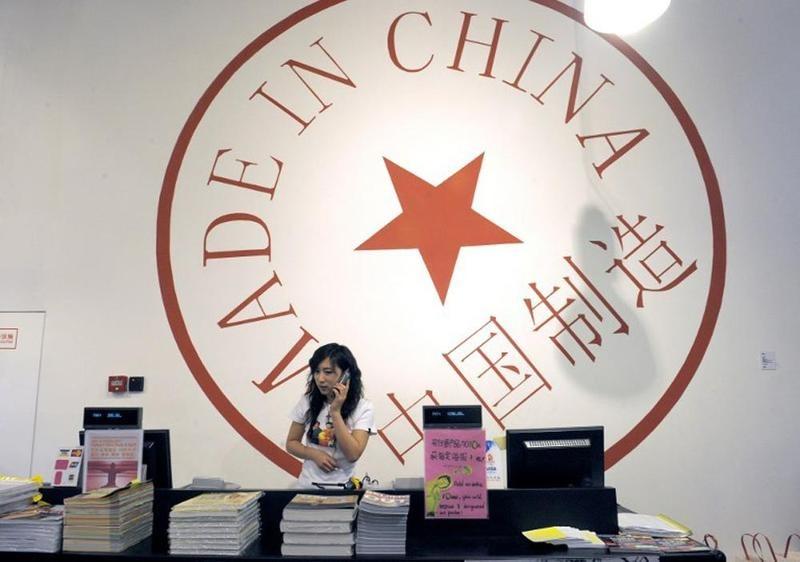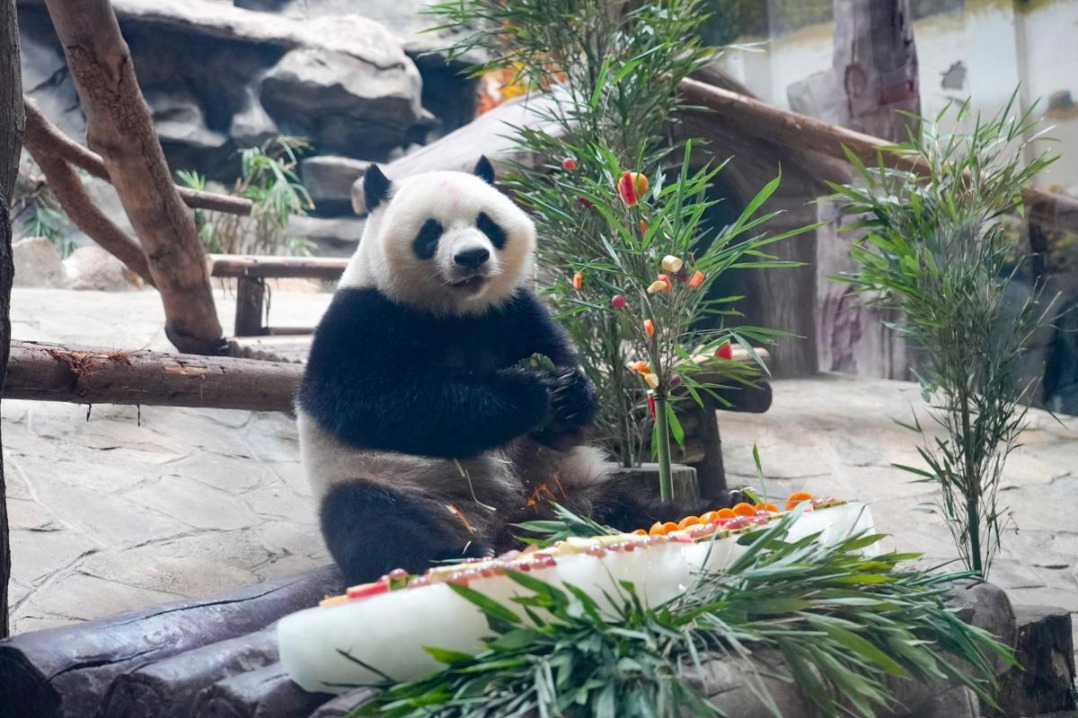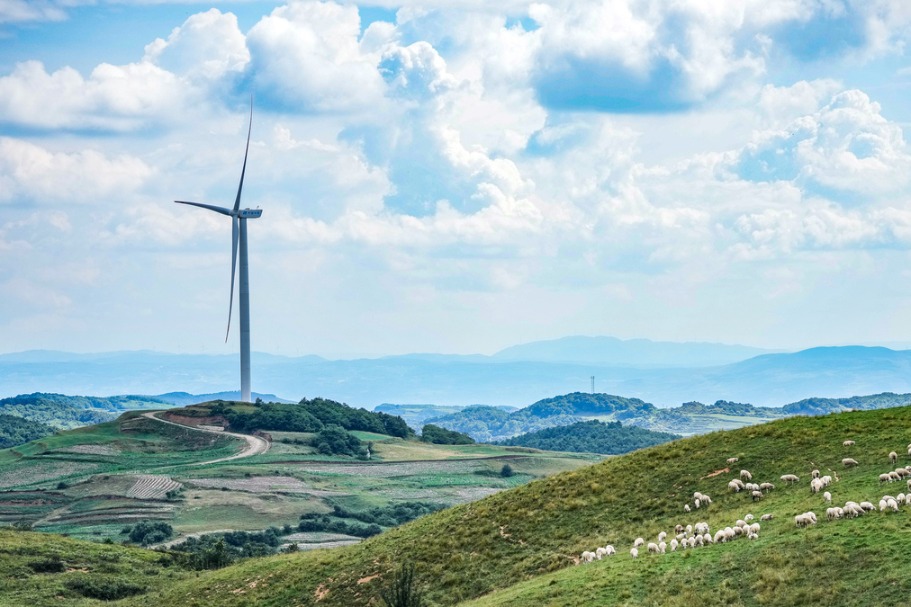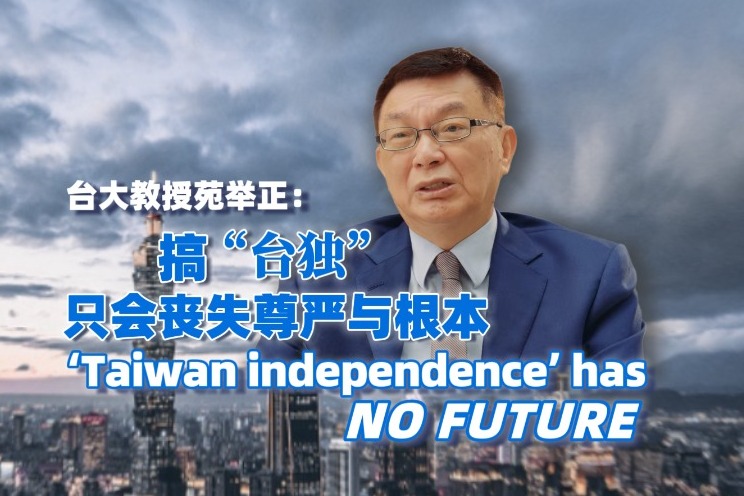'Made in China' brand comes of age


Homegrown products have made their mark on the Chinese mainland in the past decade, and are no longer seen as cheap or inferior to foreign labels. Luo Weiteng reports from Hong Kong.
Feng Jidong can still vividly remember one summer night nearly a decade ago when he and four college roommates, their eyes glued to computers, waited with bated breath for an online presale to kick off.
As the clock struck 10 pm, up to 100,000 of the latest models of the once little-known domestic smartphone maker Xiaomi had been sold out in the blink of an eye. One lucky dog among them managed to bag one. Poor guys like Feng still struggled to refresh the landing page until the presale was all over almost as soon as it began.
"At that time, it was a rare experience indeed to scramble for domestic products," Feng recalled. "There was always a rush for iPhones, European luxury bags and even Japanese rice cookers and toilet seats. But when it comes to homegrown brands, most consumers simply didn't believe they were well worth the time and trouble."
In the past 10 years, however, Feng has witnessed the boom times for indigenous products. Not only have historical or time-honored brands, whose popularity slowly waned in the '90s as more customers were attracted to foreign goods, been revived to become cool again, new domestic brands are also very much part of the wave.
The 30-year-old native of Yunnan province had helped his cousin snap up the refined edition of the classic Warrior sneakers - a 94-year-old Shanghai-based sporting footwear label deemed as "must-haves" for gym classes at school in the old days. Feng also joined the Singles' Day shopping spree to scramble for the special edition of Song Dynasty (960-1279) ceramics-inspired lipsticks, released by emerging Chinese mainland beauty brand Huaxizi, for his girlfriend. Despite coming away with nothing in the presale 10 years ago, he has become an ardent supporter of Xiaomi, Huawei, Vivo and their domestic peers.
Although some may argue that the renewed interest in homegrown brands is the result of well-crafted "hungry marketing" and whimsical branding, it can't be denied that once a badge of honor, foreign products may no longer be the alpha and omega for consumers feeling cool.
Today's new generation of consumers want items that reflect their own culture rather than just foreign heritage and exclusivity that have been so popular to date, which makes guochao, which literally means "national hip" or "Chinese retro", a trend to take seriously.
"Nowadays, the 'Made in China' label no longer inherently means cheap, inferior and unfashionable," said Zhou Zhendong, professor at the School of Journalism and Communication of Xiamen University. "But unlike campaigns spearheaded by a small number of designers and creators in previous years to promote the so-called China chic element, which were arguably too cultured to be appreciated by the masses, the ongoing guochao trend goes beyond a basic 'proudly Made in China' concept and proves to be a real market force to be reckoned with."
More than 80 percent of ready-to-buy items in Taobao consumers' online shopping carts were domestic products, according to a report unveiled by China's biggest e-commerce company Alibaba Group in May. Over half of guochao fans were found to be consumers born after 1995 and 60 percent of them come from third- and higher-tier cities.
Hu Yu, executive dean of the Institute for Cultural Creativity at Tsinghua University, highlighted three major factors behind the rise of guochao. "The first one is ethnic cultures and the second, homegrown brands. The third and most important one, is the power of youth."
The power of youth
The dizzying growth of the world's second-largest economy has given birth to a new breed of super consumers, who've now gone beyond mimicking the patterns of the more sophisticated Western shoppers to being trendsetters and innovators.
Deemed one of the most remarkable footnotes to the nation's growth story, they've come of age with a sense of national pride and self-esteem, and are known to be enamored of brands carrying serious cultural connotation.
Generation Z consumers, defined globally as the cohort of people born between 1996 and 2010 and who made up about 15 percent of China's population and contributed to an estimated 40 percent of the country's total consumption last year, have laid the foundation for the guochao trend, said Wu Shichun, founding partner of Plum Ventures - a venture capital firm based in Ningbo, Zhejiang province.
He said Generation Z consumers are paying more attention to personal needs rather than just letting mainstream media dictate their tastes. They vote for product quality and word of mouth rather than falling into the myth of big brands. They firmly believe in the "pretty is power" culture in an aesthetics-driven era, and are always willing to pay for what they like. They also tend to outspend their budget, a behavior driven in part by robust confidence and optimism in future earnings.
While guochao has been interpreted as the perfect embodiment of a rising wave of nationalism and cultural confidence, Wu's convinced that the respectable Chinese brand has staged a comeback, and some have not only caught up with their more established foreign rivals, but have actually begun to overtake them in China and beyond.
"More importantly, a new breed of guochao entrepreneurs has a better understanding of Chinese consumers. Previously, big-name foreign companies, in a one-size-fit-all approach, would sell their brand stories across the globe. Such a narrative, with the traditional Western way of thinking, used to work in the Chinese market," Wu said. "But, now, if foreign brands fail to tell stories in a locally understandable manner, they could hardly convince Chinese consumers to dip into their wallets."
Yet it may be debatable whether there's still a sort of "Western gaze" embedded in the guochao trend. The guochao term is said to have been coined and catapulted into the limelight after Chinese sportswear brand Li-Ning made its stellar debut at New York Fashion Week in 2018, with its Taoism-inspired Wu Dao collection starting to become collectors' items.
Established in 1990 as the eponymous sportswear brand of Olympic gold medalist-turned-entrepreneur Li Ning, who is hailed as the "Prince of Gymnastics" in China and lit the cauldron at the opening ceremony of the 2008 Beijing Olympics, Li-Ning was positioned as an affordable brand with conservative design targeting a mostly middle-aged market in its first 30 years.
Having suffered years of declining sales, the group launched a turnaround plan in 2012 that included repositioning its brand value as a trendy fashion icon targeting middle-class consumers. Its debut at New York Fashion Week, where Li-Ning rolled out its second business line, known domestically as "China Li-Ning", can be seen as part of the plan.
The company recorded 20 percent revenue growth in 2018, marking the first time the brand's revenue had hit the 10-billion-yuan (1.5 billion) mark since its founding.
It may be hard to say how much Li-Ning's turnaround can be attributed to winning recognition from the West. Another example from footwear maker Feiyue may be more straightforward. Founded in the 1920s, the Shanghai-based brand, together with Warrior, once dominated the nation's footwear business as the "go-to" sneakers for almost every Chinese in their heyday from the 1960s to the 1980s, only to be overtaken later by foreign brands like Nike and Adidas due to their global prestige.
It was forgotten for about a decade until a French entrepreneur rediscovered the shoe while learning martial arts in China. He bought the rights to sell Feiyue in France in 2006, and the brand took off, both on the world stage and in its home country.
Culture confidence
Kerra Zhou, founder of brand strategy consultancy Kerrisma, said she believes the guochao trend is moving to the next stage, where its success will rely, first and foremost, on gaining cultural confidence rather than Western validation.
To be sure, the origin of guochao can be dated back even earlier, at least as early as when Shan Jixiang, a famous former curator of Beijing's Palace Museum, made good efforts in advocating different aspects of traditional Chinese culture, essentially helping to turn one of the most visited museums in the world into a trendy consumer brand and modern fashion phenomenon.
In 2012, the Palace Museum, also known as the Forbidden City, which used to sell standard antique replicas that were outsourced to external manufacturers, began developing its own branded products. It found initial success with original products from Chinese-style paper tapes to modern essentials like phone cases, with designs or branding inspired by the national treasures on display in the Palace Museum.
What proved to be a massive hit was a new range of beauty products. In December 2018, online buyers snapped up more than 100,000 lipsticks, whose tube bears traditional patterns such as royal embroideries, antique furniture, auspicious clouds and fairy cranes, within just four days of their launch.
Many young consumers, who failed to grab one from the first batch of tubes, had to make do with wrapping their Dior lipsticks or SK-II essence bottles with traditionally-patterned paper tapes from the Palace Museum to create their own Chinese-style packaging.
According to Shan, sales revenue from innovative cultural products soared to 1.5 billion yuan in 2017, compared with 1 billion yuan in 2016, and 600 million yuan in 2013.
In recent years, the saying "Palace Museum in the north, Dunhuang Research Academy in the west and Yuyuan Garden in the east" has highlighted the three historic landmarks on a national level that have been at the forefront of the guochao trend. Their sheer existence reinforces the belief that "regional uniqueness leads to global acceptance".
In 2016, a three-episode television documentary, "Masters in the Forbidden City", drew even greater attention to the once-obscure profession of antique restoration, and resonated with young people known for their ever-growing cultural consciousness.
The series, whose roaring success made it to the big screen several months later, also led to a surge in applications for jobs at the Palace Museum which, in 2015, celebrated the 90th anniversary of protecting the treasures and grounds of the 500-year-old Forbidden City.
This offers a glimpse of the considerable mass base of the guochao trend, indicating how the momentum has been driven significantly by profound grassroots sentiment and has what it takes for a far-reaching impact.
"Nowadays, there're numerous culture-focused TV programs featuring famous stars, including 'Chinese Poetry Competition', 'National Treasures' and 'Everlasting Classics' that build up a sense of social belonging for young viewers with China's traditional culture," said Charlee Ree, founder and chief executive officer of Hong Kong-based artificial intelligence marketing platform EternityX.
The impact of guochao has expanded across business categories, such as the high spending potential fashion sector, where Western validation may remain as an open sesame to break into the elite club. It has also made its mark in cosmetics, retail, technology and automobiles.
Guochao's comprehensive and complicated nature has fueled an expanding range of brand collaboration that taps into China's distinct heritage by leveraging current tastes for guochao productions, cultural creations and consumer nostalgia.
For years to come, guochao looks set to be a defining feature of Chinese consumer culture. It will evolve in many different directions and spill over to every category of product imaginable, according to influencer marketing platform Parklu.
Refuting the idea that guochao may be just a flash in the pan, Zhou of Xiamen University said he firmly believes the trend will become cooler than ever. "We're now only half way along the journey before embracing the climax of the momentum."
- Diplomats visit important wartime sites
- Tianjin Port crew member rescues a Filipino seaman
- Govt asks medical bodies to submit procurement volume for bulk-buy program
- China's top court enhances handling of foreign-related cases
- Zhengzhou issues flood alert, orders closures amid heavy rainfall
- PLA releases footage of drones hunting 'hostile warship'





































